#Luminist Coastal Scene
Text
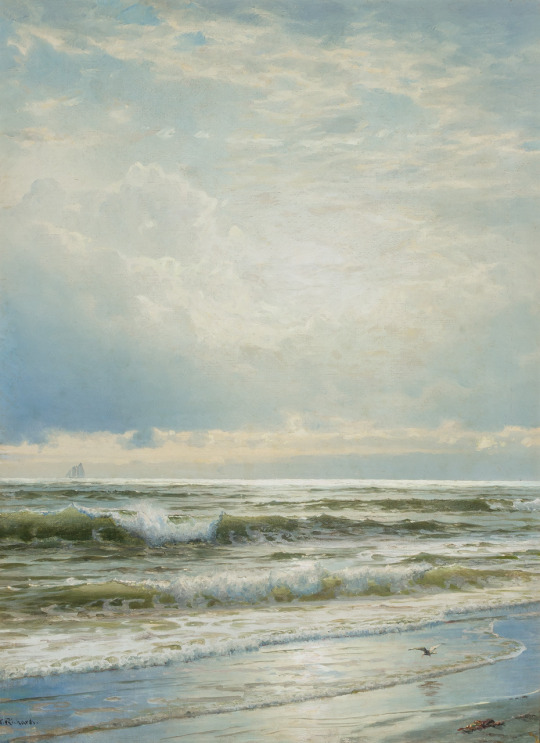
William Trost Richards (American, 1833-1905)
Luminist Coastal Scene, n.d.
#William Trost Richards#Luminist Coastal Scene#art#fine art#classical art#oil painting#fine arts#1800s#ocean#ocean painting#beach painting#painting#american#american rt
780 notes
·
View notes
Text
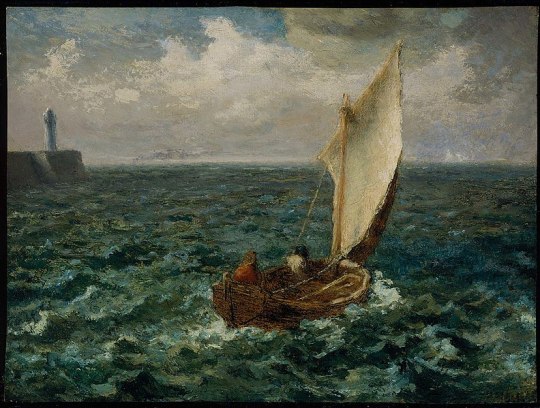
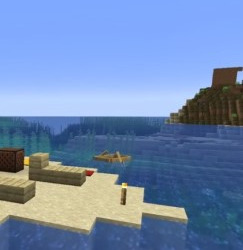




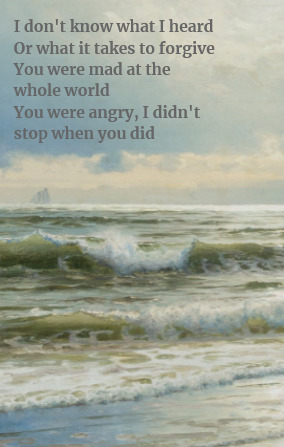




Two brothers on the same beach and an ocean away.
Lyrics are from Older by Searows. Rest of credit is below the cut.
Jean-François Millet, Fishing Boat / Jean Désiré Gustave Courbet, Beach at Dieppe, The Fishing Boat / Margaret W. Tarrant / Charles Euphrasie Kuwasseg, The Beach / Frederic Edwin Church, Stormy Sea / William Trost Richards, Luminist Coastal Scene / Winslow Homer, Dad's Coming! / Alexander Nasmyth, A View of Tantallon Castle with the Bass Rock / John Wilson Carmichael, A Cutter in Distress to the South of Dunstanburgh Castle, Northumberland
29 notes
·
View notes
Photo

On the Coast by John Frederick Kensett, 1870
Already an acclaimed Hudson River School painter, in the mid-1850s, John Frederick Kensett began to shift his aesthetic toward a more luminist treatment of light and form. The artist “became well known for his ability to endow a scene with his own tranquil, poetic feeling. [He] shifted from the more conventional anecdotal picturesque mode derived from the tradition of [Thomas] Cole and [Asher] Durand, to the quiet openness, light, and simplification of form, color, and composition that is now recognized as his mature style and associated with the phenomenon of ‘luminism.’” (J. Driscoll, John Frederick Kensett: An American Master, exhibition catalogue, Worcester, Massachusetts, 1985, p. 99) Over the following years, he would fully realize his mastery of the poetic seascape in works inspired by the New England shore, such as On the Coast.
Painted in 1870, the present work was executed during a period when Kensett was traveling broadly, including trips on the Mississippi River and, with Sanford Gifford and Worthington Whittredge, to Colorado and the Rockies. However, New England would remain his favorite subject, and he frequently revisited the coastal landscapes there to explore different effects of light and atmosphere. For example, he painted the shoreline of Beverly, Massachusetts, more than twenty times between 1859 and 1872, an environment which may have also inspired the present work.
In On the Coast, Kensett has created a palpable sense of atmosphere, where one can almost feel the warmth of the sun as the sky, sand and sea bathe in its light. The scene is at once sublime and peaceful, as the figures along the beach and ships along the horizon become dwarfed by the expansive ocean. With this scaling and perspective, the work explores the relationship between mankind and nature, a classic Hudson River School theme dating back to masters Cole and Durand and celebrated throughout Kensett’s oeuvre. With its beautiful execution, crystalline light and exceptional composition, the present example radiates the qualities of Kensett’s most successful coastal scenes and serves as a striking example of his mature, luminist style.
8 notes
·
View notes
Text
The Grand Event at Chapel Farm Collection

Mark your Calendars! This December 6th-8th is going to be an unforgettable shopping experience at Chapel Farm Collection, The Grand Event. They have been busy filling their showroom with the most unique holiday decor, treats, and amazing gifts for women, men, baby and home. Outside of the showroom they will feature a handful of their favorite local artists and artisans. Here are a few of them featured below:

"Chapel Farm Collection enjoys providing a platform for the talented artist and artisans in our region- Providing our customers with unique gifts for giving and gracious living!" -Jeanna Pilot
Grand Event Schedule
Friday & Saturday 10am-5pm
Creators & Cocktails Friday 5pm-7pm
Sunday 12pm-5pm
FEATURED ARTISTS & ARTISANS
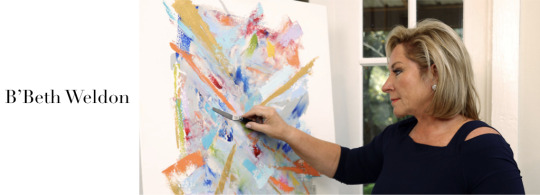
B’Beth Weldon is an internationally exhibited and collected artist with her studio in Fairhope, Alabama. Recognized for her abstracts, landscapes and sport art.

Founded in Fairhope in 2012, Cake! by Donna offers classic cakes and confections handmade fresh with natural ingredients by Chef Donna Hill. Favorites include: Rosemary Butter Cookies, Old Fashioned Cheese Straws
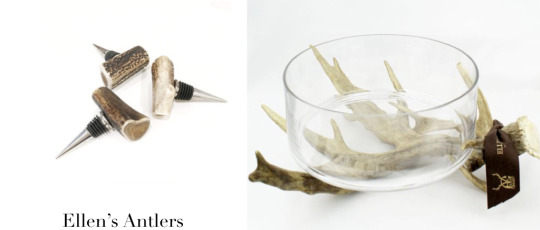
Beautiful and unique antler décor handcrafted in Memphis ,TN from world-class Red Stag and Whitetail Deer.

Now you can savor the taste of summer all year long with Frios Gourmet Pops! We use locally-sourced ingredients – like fresh fruit and dairy – to make our pops from scratch.
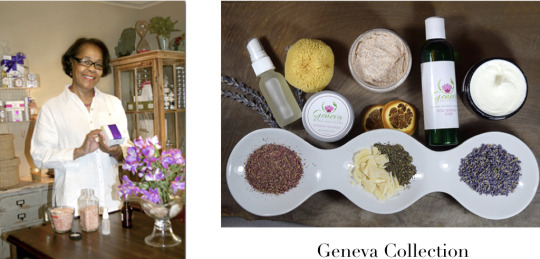
Geneva’s knowledge of herbs and botanicals and natural elements began in the backwoods of mane Mississippi under the tutelage of her grandmother, Bertha. Continuing and growing in the tradition of her elders and studying compositions and characteristics of natural and homeopathic remedies Geneva’s healing and enhancing blends are created with reverence for the gifts of terra firms with respect and love. Always acknowledging and preserving the integrity of ingredients is a priority.

With publications from Southern Home to Bake from Scratch & Tea Time, Hoffman Media is providing inspiration and instruction for enriches daily living. Their publications & pages are full of beautiful imagery and stories, recipes, and so on. Specializing in cook books, home decor, and entertaining. Hoffman Media is inspiring all of us to embrace the beauty of life & celebrate.

Known for her “Old Rugged Crosses” made of seashells, Linda creates stunning one of a kind artwork using the elements of nature from life on the Gulf Coast. From unique pieces made of seashells to driftwood & oyster filled canvases, her artwork makes you feel connected to the coastal lifestyle and will remind you of the way the tide comes and foes and the beauty life on the water.

Ornaments 4 Orphans is a fair trade social enterprise dedicated to providing critical support for orphans and vulnerable children in Africa. They use ethical and sustainable practices to advance their society by creating jobs, fighting poverty, preserving families, and empowering impoverished communities. 100% of the profits are invested back into the communities we work with through trade and charity. The fair trade items we sell are handcrafted by local artisans that are employed by Ornaments 4 Orphans.

Original Architectural Watercolors by Artist Porter Rivers

The recent focus of Sandy Hodgson’s work is the coastal environment where she resides. She is fascinated by the beauty of the Gulf Coast area and inspired daily by the scenes she encounters, from skycaps over Mobile Bay to the bucolic farm land of her youth. She is influenced by the Hudson River school of painters as well as the Luminist painters of the 19th century.

They source their flavorful honey from hives in central Alabama and along the Gulf Coast to your home. Their honey has the richest flavors from healthy bees, giving you the best that Mother Nature has to offer.

Susan Turner is a well-known regional artist and has exhibited work in shows and taught painting workshops across the Southeast. Her work can also be seen on Facebook at Brand New Day Creations. Her art reflecting her recent interest in fish as a part of her long time work in functional art. The fish she paints range from local game fish to those found in the warm waters of the Gulf of Mexico, including trout, catfish, crappie, bass, grouper, amberjack, mahi mahi and many more. Susan Turner is a well-known regional artist and has exhibited work in shows and taught painting workshops across the Southeast. Her work can also be seen on Facebook at Brand New Day Creations.

A native of Oxford, Mississippi, Debra Hewitt’s foundation is deeply rooted in faith and family. She grew up surrounded by lovely homes filled with antiques and art, which instilled in her an appreciation for beautiful things and the sentiment attached to them.
TELL THEM SCOUT SENT YOU!

0 notes
Text
Hyperallergic: Maureen Gallace’s Uneasy Sublime
Maureen Gallace, “Clear Day” (2012), oil on panel, 14 x 18 inches (35.6 x 45.7 cm) (all images courtesy 303 Gallery)
Maureen Gallace is a wonderful anomaly, a painter of vision and serious skill whose elemental works seem at odds with so much visual art these days. Bigness and boldness grab attention. Damian Hirst’s whopping, multimillion-dollar, sunken treasure extravaganza is now on view in collector Francois Pinault’s two museums in Venice, and the art world, whether for, against, or somewhere in the middle, is predictably going gaga.
Gallace’s oil-on-panel paintings, primarily of enticing, yet stark and unsettling coastal scenes, are resolutely small — most of the works in her impressive mid-career survey show, Maureen Gallace: Clear Day at MoMA PS1, measure a mere 9 by 12 inches or 11 by 14 inches. In this fraught Trump time, political matters and identity issues are often paramount and sometimes elicit loud reactions; witness the controversies surrounding Dana Schutz’s painting of Emmett Till in his open coffin and Jordan Wolfson’s head-bashing, virtual-reality installation, both at the Whitney Biennial. There are no people at all in Gallace’s paintings, and also no overt politics. Instead she paints the beaches and barns, beach shacks and seascapes, houses and empty roads, foliage and sky of coastal New England, although she occasionally ventures further inland (there is a great painting of a very lonely looking Merritt Parkway in this show, and a stunning painting of red barns in the snow in Easton, Connecticut.) This is a region and landscape that Gallace (who grew up in southern Connecticut) knows well. Her orientation is toward the local and specific, the “lure of the local,” as the writer and art critic Lucy Lippard has put it. The remarkable thing is how such commonplace scenes —a beach shack next to the ocean; towering trees, which look vaguely threatening, next to a house; a rural barn close to a seaside road—while lovely, have such an air of mystery and unease.
Maureen Gallace, “Surf Road” (2015), oil on panel, 9 x 12 inches (22.9 x 30.5 cm)
The barn that I mentioned is in “Surf Road” (2015), a standout in this exhibition which includes a smattering of early paintings from the 1990s, a smart assortment of works from the 2000s, and a generous selection of recent works from 2015 and 2016. The cloud-streaked sky is a mesh of exquisite, yet also unruly, blues and whites. On the left is a thin beach with scraggly vegetation, and beyond that a glimpse of blue ocean. In the foreground is a bush with just two orange dabs for flowers. There is a curving, empty road (the surf road from the title), which seems like a vulnerable border between land and ocean, humans and nature, the present moment and eternity. There is a simple gray telephone pole. The scene is alluring but also bleak. Gallace works wonders with her typically spare means, which include dabs, smears, irregular pools of color and abrupt brushstrokes (it’s worth paying careful attention to her complex and sometimes fractious surfaces.)
While her paintings are realistic, they display a pared down, at times rudimentary realism that also includes numerous abstract elements. Beach vegetation appears as just a few green and yellow-green brushstrokes. The ocean can be nothing more than a slightly askew blue band. Trees can be delineated just by gray, black, and white streaks. Houses — often without windows and doors — can consist of simple monochromatic planes.
Then there is that barn. Gallace has painted it and a nearby telephone pole with a brilliant, glowing white that seems to have gathered and absorbed clouds and sea spray. While physical, they seem ethereal, made not of wood but of concentrated mist. Frankly gorgeous and even sublime, both barn and telephone pole are also unsettling, but in a way you can’t quite pin down.
Herman Melville — who knew a thing or two about New England, the ocean, and the color white — had a lot to say about this color in his great chapter in Moby Dick titled “The Whiteness of the Whale.” For Melville, white symbolizes purity, innocence, and grace but also induces irrational dread: the whiteness of angels’ wings and wedding gowns, and but also the ghastly whiteness of a shark’s underbelly, the pristine whiteness of amanita virosa (the so-called “destroying angel,” one of the deadliest of mushrooms), and the pallor of a Caucasian corpse. Something of that complexity can be found in Gallace’s white structures, which also seem liable to disperse and vanish in the next instant, one of many times when stout, manmade things appear precarious and ephemeral.
Gallace’s paintings, with ample space between them, are installed as a horizon line around the central gallery, and installed in the same way around several adjacent galleries. Especially when seen from a distance, these small paintings almost float upon the white walls, and sometimes half-dissolve into them; the walls correspondingly appear vast, almost overwhelming. This makes perfect sense because Gallace’s compact paintings deal in vastness, or rather a combination of precision and vastness.
Maureen Gallace, “Beach Shack, Door” (August 14th, 2015) oil on panel, 9 x 12 inches (22.9 x 30.5 cm)
In “Beach Shack, Door August 14th” (2015), a gray beach shack stands at the edge of the ocean. There are no signs of life anywhere, even though, as the title tells us, this is high summer: no beach toys or barbecue grill, no bicycles or towels. Instead this solitary shack seems implacably isolated, fragile, perhaps abandoned, and lonely — a loneliness that suffuses Gallace’s other paintings as well.
Still, there is something rapturous about this scene. A white doorframe and gables echo the color of wispy clouds and white sand. This humble shack seems lit up with palpable intensity. You look at this shack but also right through it, through its exposed front door to the ocean and sky behind. This building is open to and implicated in nature’s immensities. Here and elsewhere the ocean is much more than a setting. It is a powerful and defining force that inspires awe and fear, delight and humility, and the same goes for Gallace’s eventful skies, which sometimes dominate the scene.
In “Pink Flowers / Ocean” (2016), one of several excellent floral paintings in the show — and flowers aren’t exactly a trending theme in the art world — delicate blossoms stand in the foreground, partially obscuring a pale blue strip of ocean. You could, the painting suggests, “lean and loaf” (as Walt Whitman wrote in “Song of Myself”) right here for hours, observing not “a spear of summer grass” but this vivid, beachside marvel. In Gallace’s painting, as you look at the flowers you also look through them and beyond them to the sea and sky. These ebullient flowers are framed by immensity.
Maureen Gallace, “Cape Cod, Winter” (2004), oil on panel, 11 x 12 inches (27.9 x 30.5 cm)
While Gallace’s rural scenes might look serene, creeping trepidation haunts many of them. People are totally absent, and you wonder about that. Oceanfront houses, or those tucked among plants and trees, don’t look homey and inviting; instead they are more like impersonal and inscrutable forces. Gallace doesn’t provide the slightest scrap of a narrative. You don’t know who lives in these houses or if they are inhabited at all; this adds to a sense of mystery. In “September 1st” (2014), a house and an attached garage are surrounded by encroaching, almost menacing green vegetation. Both structures are gray and have blank facades. This home is sealed off from the outside; it’s as if the house and garage have turned into a bunker. In “Cape Cod, Winter” (2004), a white house with a black roof and a nearby white building with a brown roof (this may be either a barn or garage) — both buildings lack windows and a door — are in front of a beige band, for a beach, and a gray-blue band, for the ocean. Again unnaturally white and almost spectral, these buildings are much more extreme than a Cape Cod house shuttered for the winter. They seem to be merging with winter, becoming ice and snow themselves, blending with the sky and ground; they “have been cold for a long time” and evince a desolate “mind of winter,” as Wallace Stevens’ put it in his great wintry poem “The Snow Man.” Half of the sky is a giant white cloud rolling in, poised to envelop and perhaps erase the buildings altogether. Gallace’s local paintings tap into a pervasive national anxiety, an ill-defined feeling of threat coupled with a nagging sense that a bright promise is faltering and may be already gone.
Lots of commentators have noted Gallace’s affinity with such 20th-century representational painters as Edward Hopper and Fairfield Porter. She also connects with a 19th-century nature-based sublime in New England, and this gives her little paintings a very big and profound historical scope. Like luminist painters Fitz Henry Lane and Martin Johnson Heade — whose works are more subdued, atmospheric, and, in a way, minimal than the comparatively dramatic and maximal paintings of the Hudson River School — Gallace discovers acute psychological and spiritual potential in unremarkable coastal scenes; she also shares the luminists’ absorption with light and color.
With the sun dipping below a gray and orange horizon, and with subtle colors reflected on a glassy sea, Gallace’s near-beatific “September Sunset” (2008) is exactly the kind of scene Lane favored, for instance in “Brace’s Rock” (1864), in which part of a jutting rock is illuminated orange by the sun while smooth water in a quiet cove (there is also the rotting hull of a wrecked boat on the beach) reflects both sky and rock. Like transcendentalist poet-philosopher Ralph Waldo Emerson, whose clarion call for immersive experiences in nature greatly inspired the luminists and the Hudson River School painters, Gallace opens herself to nature, studies it intently, observes its forms, and absorbs its changing moods, and then channels this into her art. Her paintings aren’t so much depictions of nature as they are charged and complex encounters with specific sites that, for whatever reasons, are deeply meaningful to her, and she sometimes returns to those sites to make new, slightly different paintings, studying the sites again, querying them, trying to discover a bit more of their mute secrets.
While Gallace does not paint whopping natural forces like lashing storms and tumultuous waves, nature is all-powerful in her works, and she probes and questions our often uneasy relationship with nature, which makes her works all the more relevant, especially now. We have lived for centuries with the fantasy that we, as humans, are somehow above nature, or masters of nature. That fantasy, encapsulated in the current president’s ridiculous claim that global warming is a hoax, is fast becoming perilous. Global warming, of course, is real and a very grave threat. The sea level is rising, severe storms are increasing, and coastal areas — including the ones Gallace paints—are especially endangered.
In “Clear Day” (2012), which is also the exhibition’s title, an empty house (this one with four windows and a door) is at the edge of what looks like a blue inlet. Each window — a blue rectangle above a dark gray one— becomes an abstract version of the ocean, sky, land and night. Nature isn’t just a setting for this house. Instead it seems to flow though the house, which is part of the environment, one more object among many, one more form among those of the sky, water, bushes, and land in the background. This house also looks curiously unstable, like a propped-up Hollywood flat. When the next fierce storm comes it might be blown straight to the ground.
Many of Gallace’s paintings feature scenes that are disconcertingly close to images common on postcards, in calendars, and in innumerable amateur paintings — the kind of local flavor, Sunday-painter paintings that one might well find among the bric-a-brac and musty furniture in a Cape Cod antique shop. I mean this as a plus. Gallace invests common, readily understandable, even timeworn local scenes with freshness and wonderment, as well as subtle agitation and upheaval.
We are all familiar with rural red barns. In “Christmas Farm” (2002), three windowless barns, each bright red with a white roof, are arrayed on a snowy field. In one sense, they are utterly normal, just some more red barns in a rural place where barns are ubiquitous. In another sense, they look strange and uncanny, as if an aerial squadron of alien barns had suddenly landed on the field.
This is a hallmark of Gallace’s work: the mundane morphing into the peculiar and uncanny. In “Ice Storm, Easton (with Robert)” (2015), two red barns with white roofs nestle in the snow beside bare trees with snow-and-ice-encrusted branches; above is a bright blue sky. Winter gathers these barns, presses against them, and threatens them, while everything still looks utterly lovely. You sense eternal cycles of creation and destruction, cohesion and entropy.
This painting with red barns (stereotypical for New England) and snowy woods (likewise) points to another New England connection for Gallace. Poet Robert Frost — about as identified with New England as one could be — also favored homespun, familiar, even clichéd scenes. Two of his most famous poems, “The Road Not taken” and “Stopping by Woods on a Snowy Evening” — and among his most sorely misunderstood — concern a couple of lightly trodden roads in autumnal woods and snowy woods at night just a bit outside of town. You can well imagine them as images in a New England picture calendar, the first accompanying October and the second accompanying December. Both use plain language in a deceptively easy, almost conversational tone.
“The Road Not Taken,” far from being the celebration of against-the-grain individualism that it is often taken to be, is a poem of radical doubt and existential crisis, mixed with stubborn perseverance. The seemingly pleasant and contemplative “Stopping by Woods on a Snowy Evening” is filled with shuddering intimations of mortality, with the woods that are famously “lovely, dark and deep” hinting at self-annihilation.
Maureen Gallace, “July 4th” (2014), oil on panel, 9 x 12 inches (22.9 x 30.5 cm)
Gallace’s quintessentially New England scenes have a similar quality. They lull you and please you while they also — very quietly — deal in rough and disturbing matters: our connection with, but also alienation from, nature; the temporariness of our creations (and also our own brevity) in relation to nature and the huge scale of time; our frequent wariness of and isolation from others; our aptitude for sheer joy but frequent experience of consternation and loss.
These paintings also never seek to wallop and bedazzle you. Instead they invite patient engagement and contemplation, verging on reverie, and they can be very, very soulful. They “dazzle gradually” as Emily Dickinson wrote in one poem and “stun you by degrees” (I’m slightly paraphrasing her here) as she wrote in another. Gallace has much in common with the New Englander Dickinson, who also made really small artworks (poems) filled with complexity, ambiguity, and crackling spirit.
There is a room in Gallace’s exhibition featuring several of her early paintings from the 1990s. Their palette is considerably darker than her subsequent work, and they are also more brushy, more rendered, more Old Master-ish. Still you can see the origins of what would become a strong, clear, nuanced, and decisively idiosyncratic vision, for instance in “Untitled (White House)” (1992), in which two startlingly white houses look almost unearthly in a dark and somber landscape. It is also worth recalling how at odds these paintings must have been with the hyper-political, poststructuralist, postmodern critical discourse of the time, often so blithely dismissive not only of landscape painting but of painting altogether.
There is another room, a concluding room if you follow this largely chronological exhibition counterclockwise, that is all frothing waves surging toward beaches. The waves are not dramatic. They are not the crashing kind that, “fold thunder on the sand,” as Hart Crane wrote in his poem “Voyages,” but are instead incessant, minor waves. In “July 4th” (2014), Gallace captures one white wave just as it is about to break on the shore. The tawny beach in the foreground is speckled with a few black marks for sea wrack and driftwood. Behind the wave stretches the undulating ocean, in several shades of blue, and a distant gray strip of land. In Gallace’s hands, this minor, workaday wave, this one instant of the infinite, becomes very special. It is ragged and chaotic, but also effervescent and sensuous, and it is downright mesmerizing.
Organized by Peter Eleey, Chief Curator, and Margaret Aldredge Diamond, Curatorial and Exhibitions Associate, this beautiful and meaningful exhibition is, for me, one of the highlights of the whole art year. It opened on April 9, will be up until September 10 and it really should not be missed.
Maureen Gallace: Clear Day continues at MoMA PS1 (22–25 Jackson Avenue, Long Island City, Queens) through September 10.
The post Maureen Gallace’s Uneasy Sublime appeared first on Hyperallergic.
from Hyperallergic http://ift.tt/2pRAkYQ
via IFTTT
0 notes